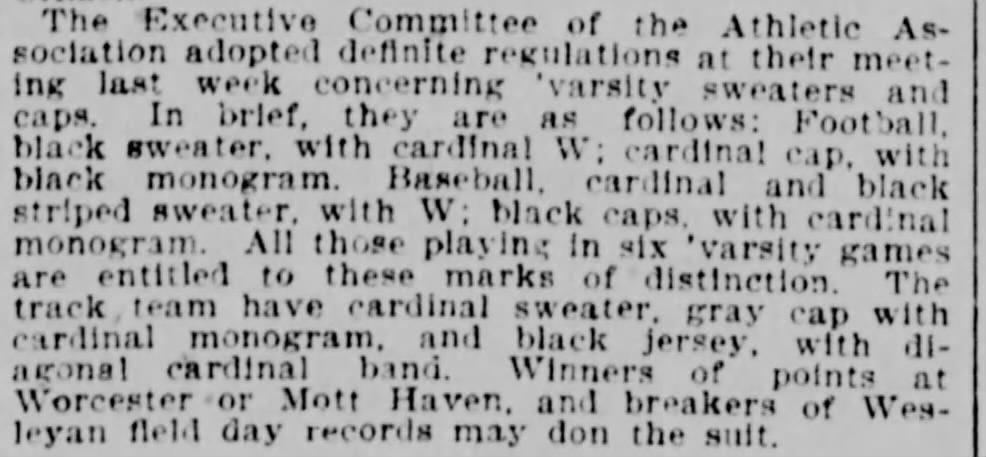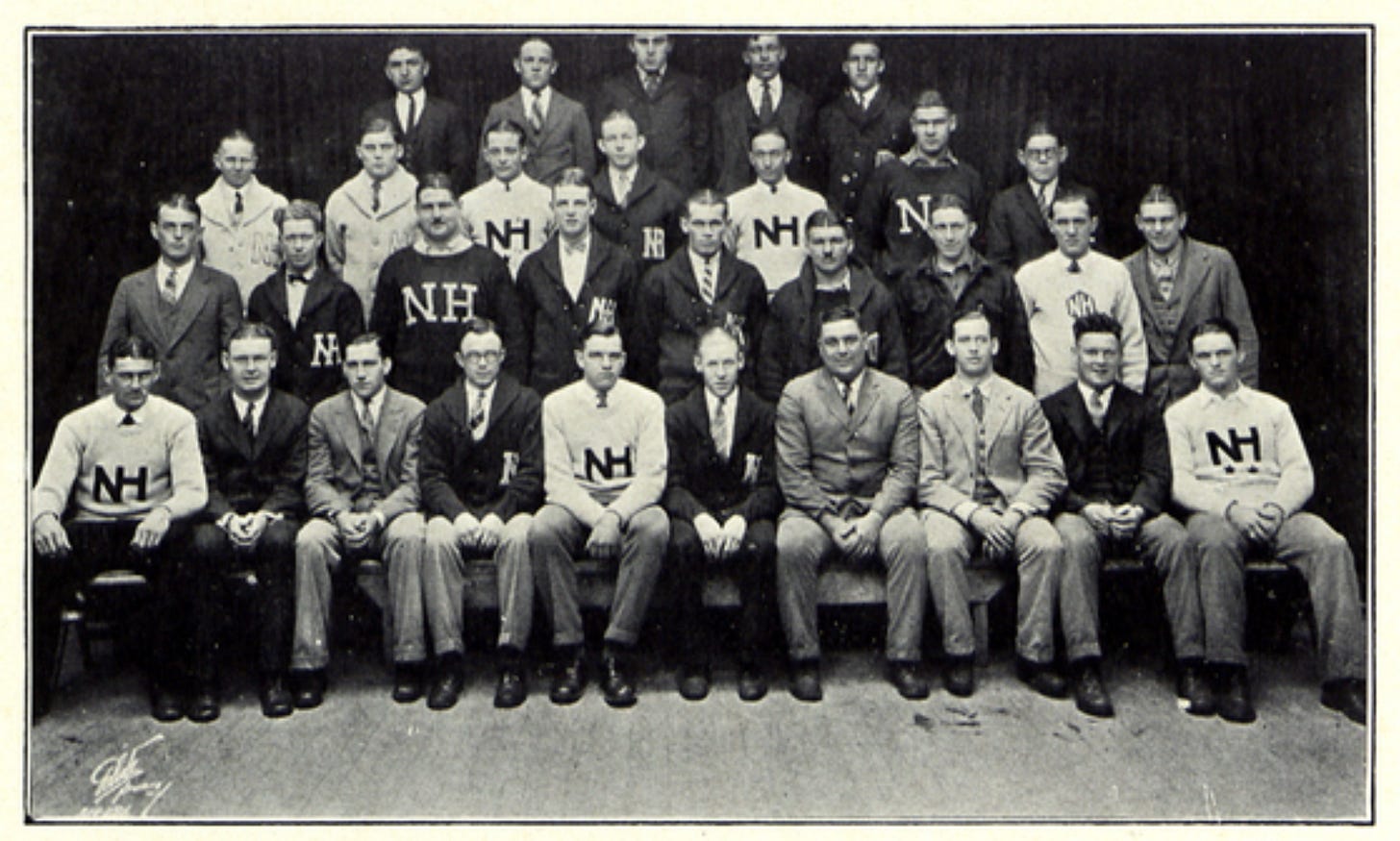Today's Tidbit... Awarding Different Varsity Letters by Sport
Football has taken many interesting twists and turns, some large and others small, including being the source of varsity letters. You might think letters were always letters, and they were awarded in the past just like they are today, but that was not the case.
Varsity letters originated informally when teams began allowing players to keep their jerseys after playing in key games or starting for most of a season. However, some people who had not earned the right to wear a letter sweater began wearing them around campuses, and when "minor sport" athletes began earning letters as well, there were efforts to distinguish minor from major letters.
In the 1800s, football, baseball, track, and crew were the major sports. Some schools considered hockey a major sport, and basketball became one later. Still, whatever the mix on each campus, many formalized which people could wear school or team-specific logos.
For example, in the spring of 1896, Wesleyan formalized who could wear different sweater and hat colors that indicated the wearer earned a letter in a given sport.
Harvard followed a similar formula, adding the odd norm that letter sweaters should be worn only on playing fields and then, not often, lest one be considered pretentious. Cornell took its own approach in 1899 when they decided that each sport should use a uniquely shaped letter on their uniforms and letter sweaters.
Images of Cornell's crew, football, and baseball teams show that each wore differently-shaped Cs on their uniforms and their awarded letters.
The concept of each sport wearing uniquely shaped letters did not spread far, though it stuck around at the University of New Hampshire until the mid-1920s.

Most schools used consistently shaped letters across sports and distinguished major and minor sports by the size of the letter, with major sports awarded larger letters than minor sports. Others added small letters near the school insignia designating the sport for which the letter was earned, such as lacrosse (LC) or cross country (CC).
Another change in the awarding of letters came in the 1920s when coeducational colleges like Maine and NYU began awarding letters to women. Barnard and perhaps other women-only colleges awarded letters before the coed schools came on board. However, since women earning letters at that time did not win them for participating in a major men's sport, it pointed out that distinguishing men's letters by sport made little sense, and the practice faded away.
Football Archaeology is reader-supported. Click here to buy one of my books or otherwise support the site.








Very interesting distinction between major and minor sports. Golf was considered a minor sports at most schools well into the 1920s, but some gave out letters for winning the Intercollegiate Championship. Did football award numerals for freshman team players?
Very interesting. Thanks for sharing. Cornell published details on the different Cs for football, crew, track, baseball and minor sports so they would be adhered to closely. You can see some of it on the link below. Happy to share more on iyellcornell.com
Wearers of The ‘C’ - https://www.iyellcornell.com/highlights#comp-l0tvblbz
I am really enjoying Football Archaeology. Thanks!
Joe
iyellcornell.com